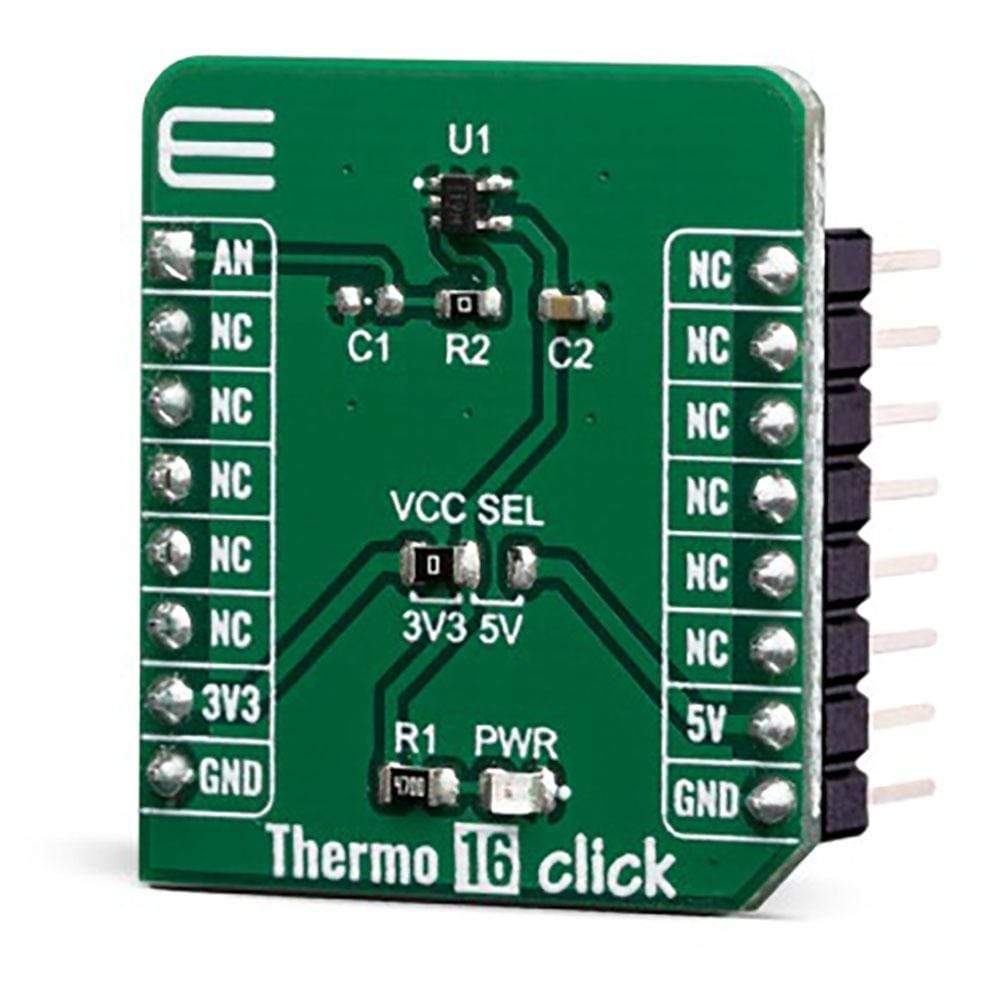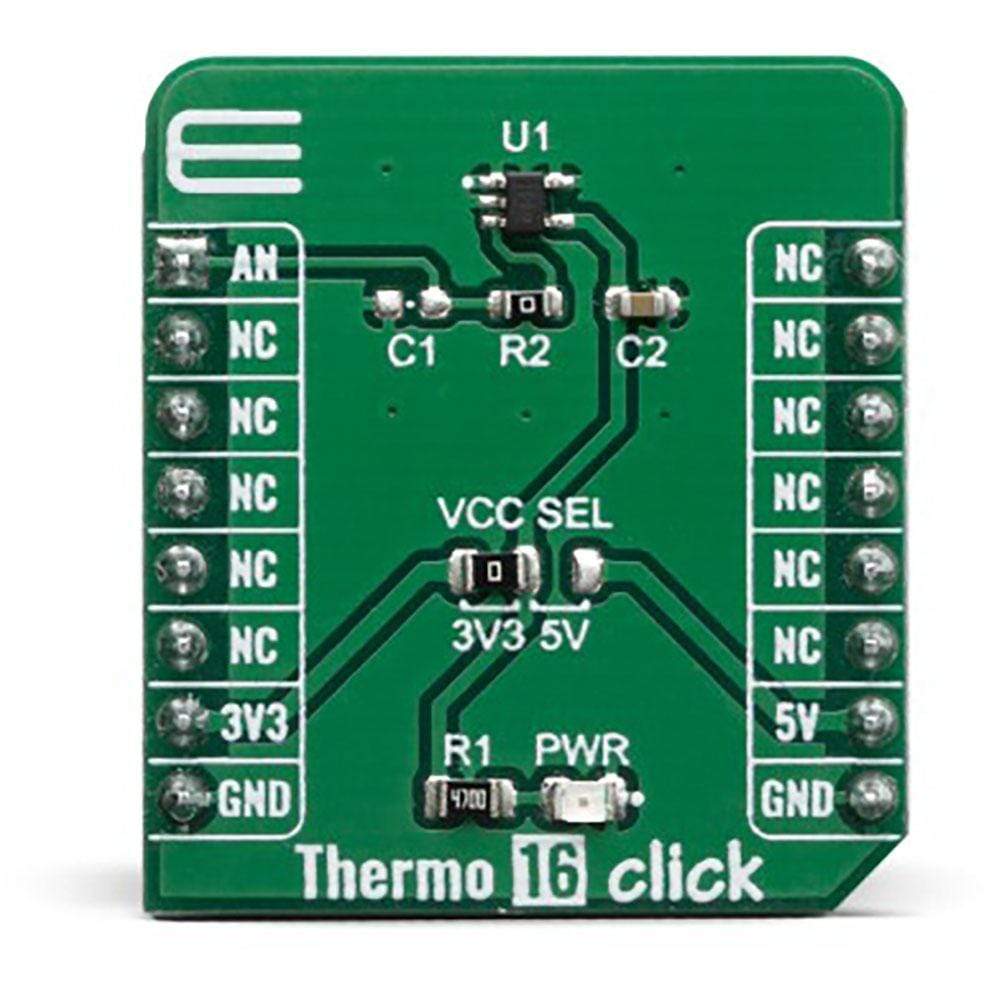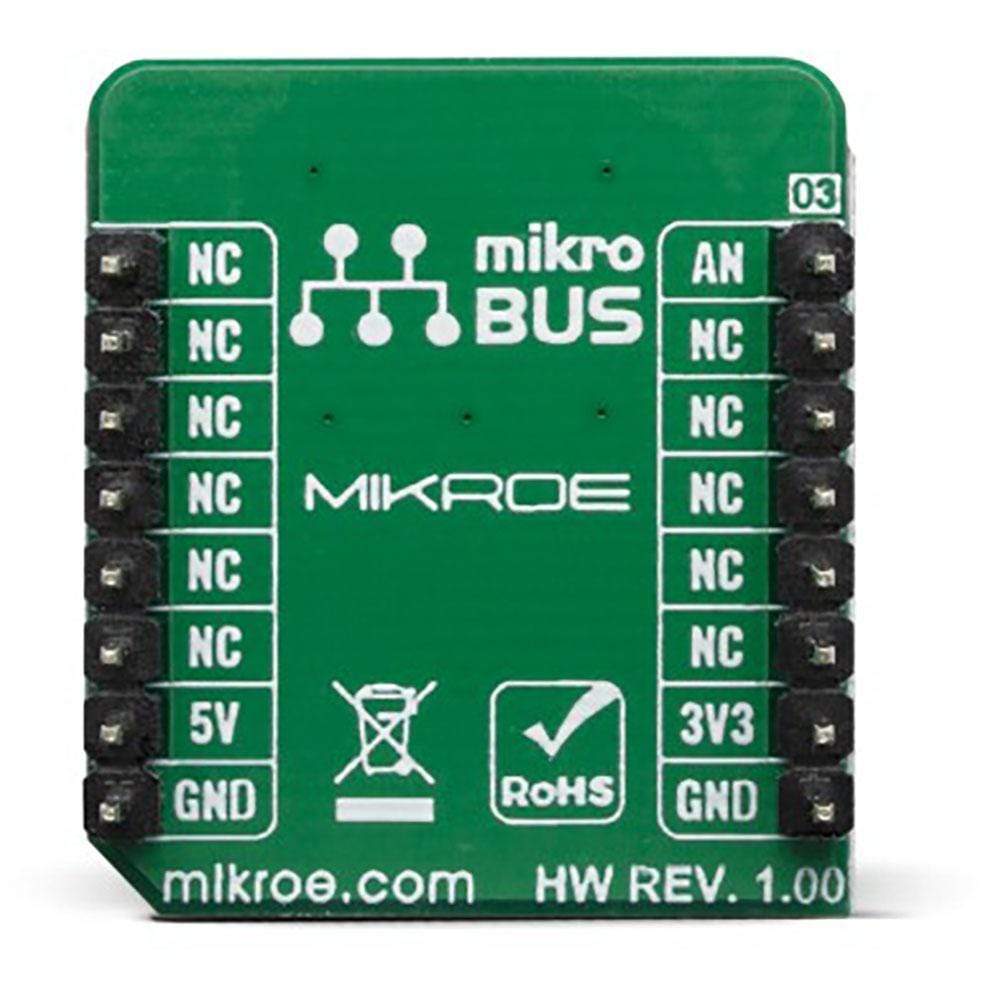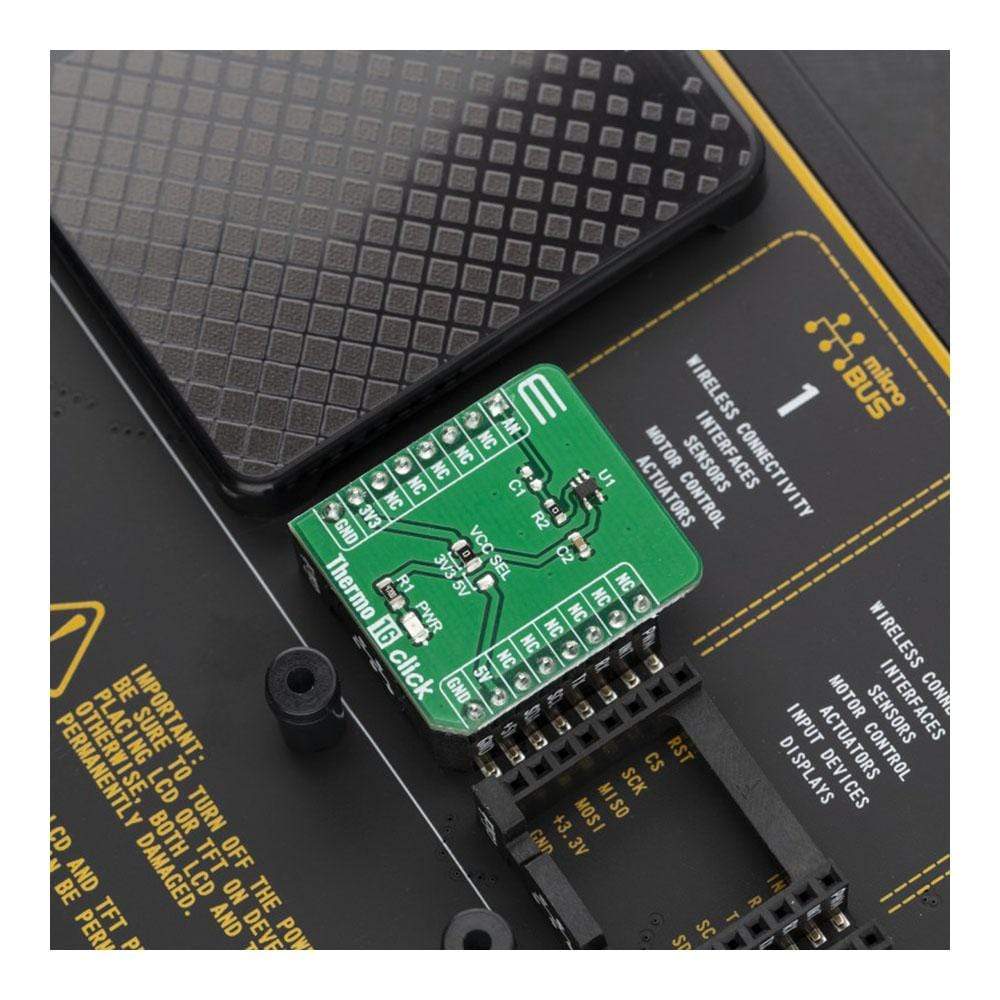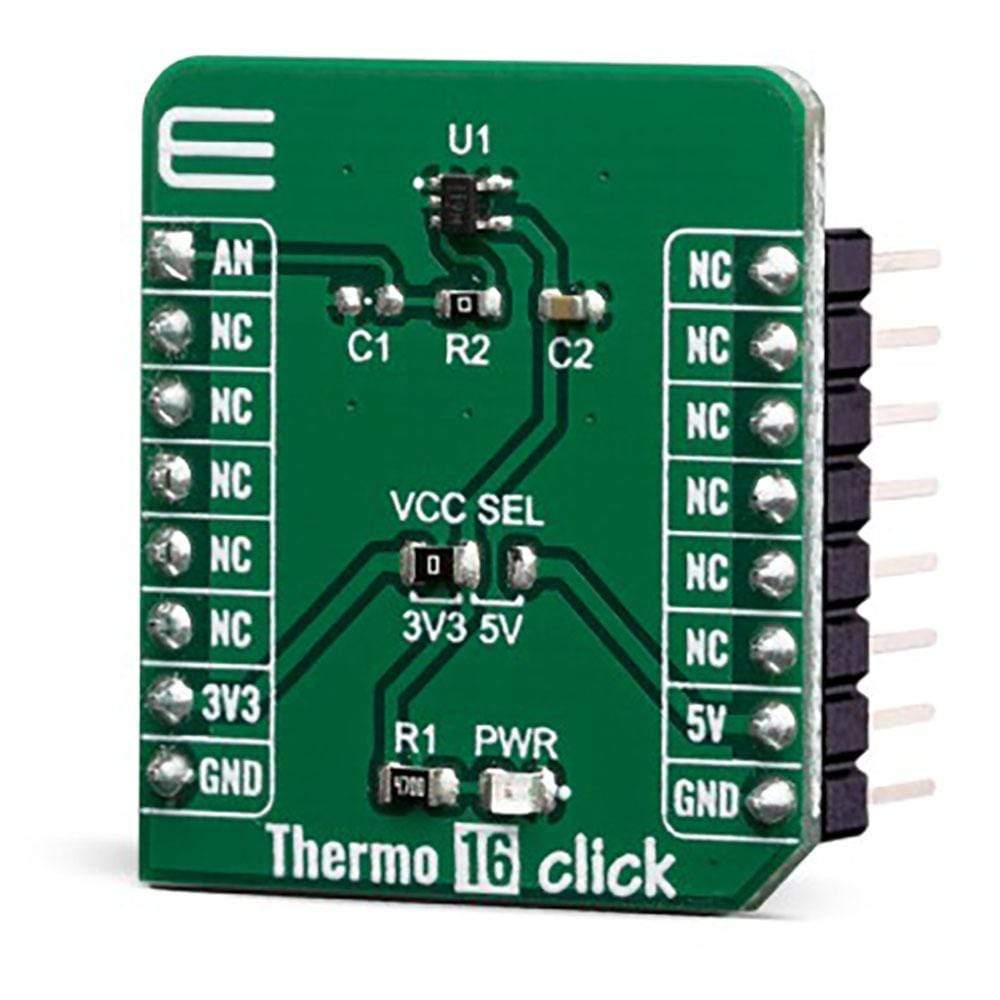
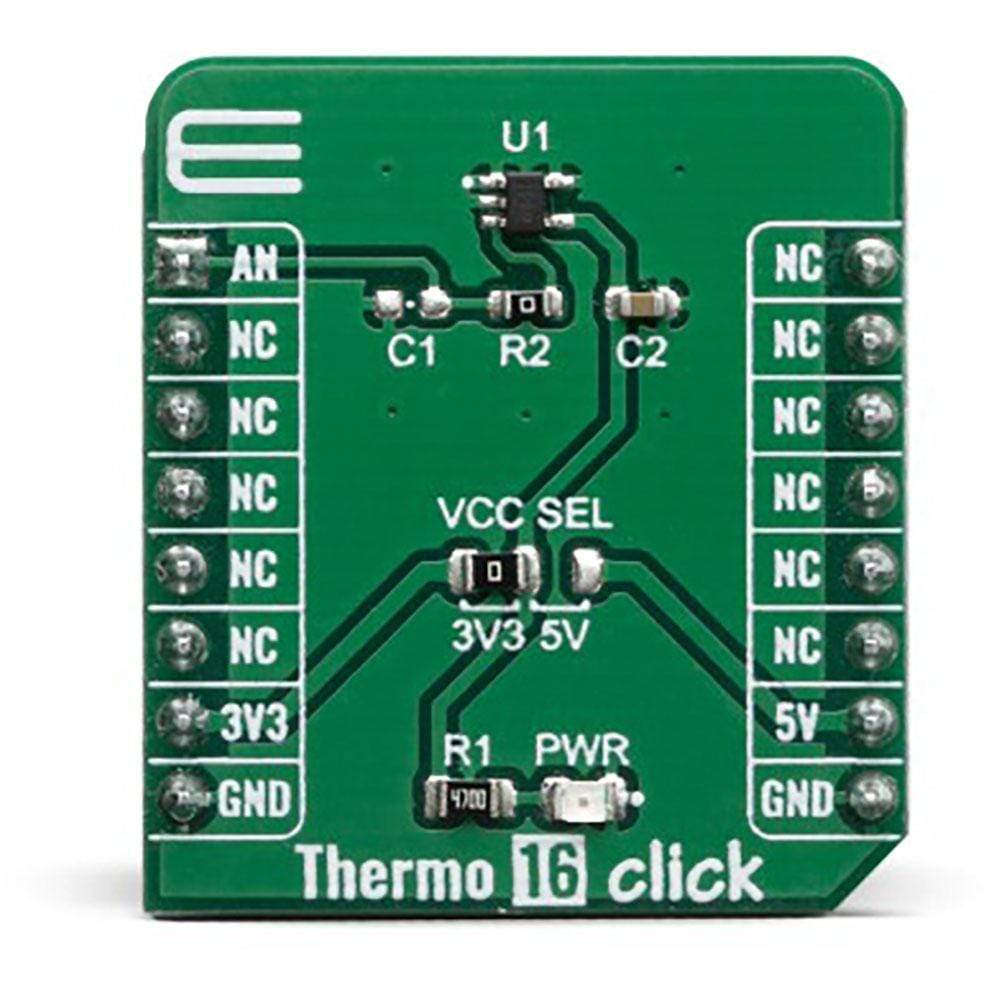
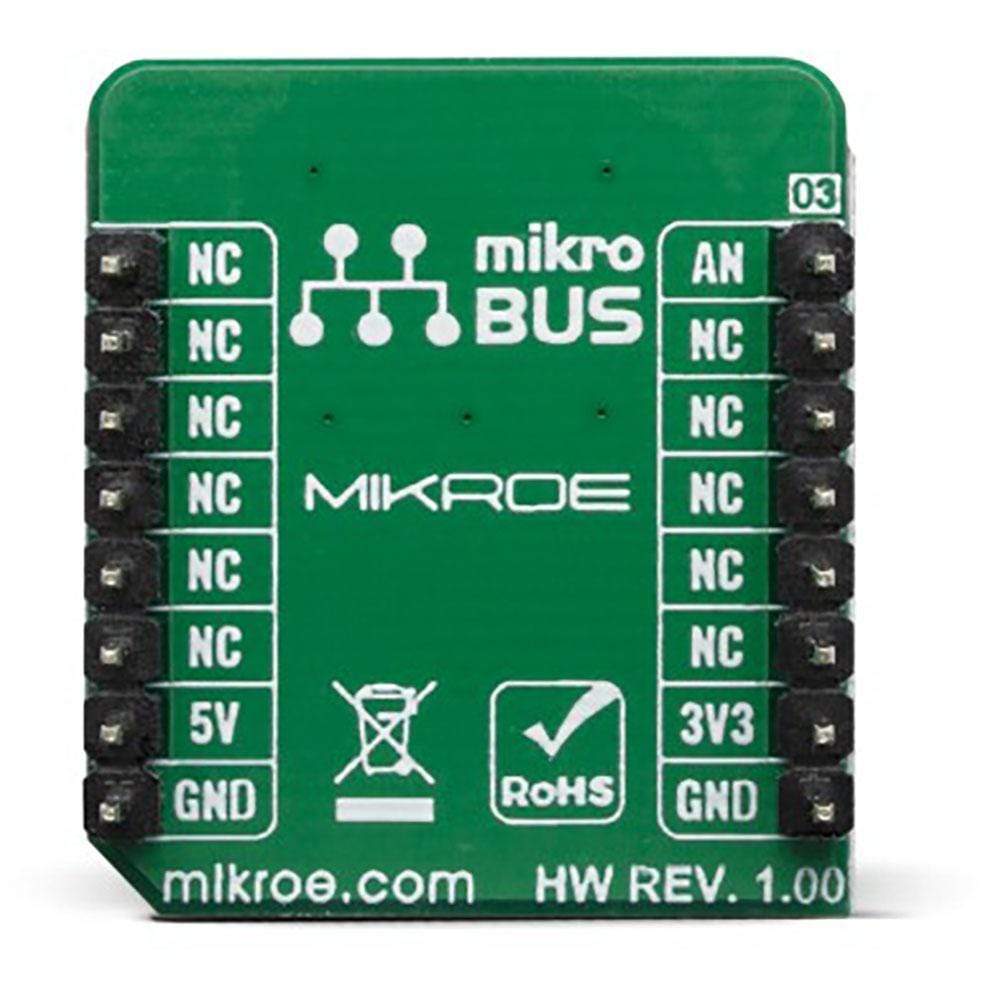

Key Features
Overview
The Thermo 16 Click Board™ is equipped with the sensor IC, which can measure temperature measurements between -40°C and +150°C so that the temperature measurement data can be processed by the host MCU. The Thermo 16 Click Board™ provides an accuracy of ±1°C in the range from 0°C to 70°C. The sensor used on this Click board™ has a great combination of features that make it a perfect choice for any temperature measurement application: Analog signal output, low power consumption, compact sensor size, and more. The sensor itself requires almost no external components, which simplifies the design, reducing the cost and cutting the time to market.
Downloads
Das Thermo 16 Click Board™ ist mit dem Sensor-IC ausgestattet, der Temperaturen zwischen -40°C und +150°C messen kann, sodass die Temperaturmessdaten von der Host-MCU verarbeitet werden können. Das Thermo 16 Click Board™ bietet eine Genauigkeit von ±1 °C im Bereich von 0 °C bis 70 °C. Der auf dieser Click-Platine™ verwendete Sensor verfügt über eine großartige Kombination von Funktionen, die ihn zur perfekten Wahl für jede Temperaturmessanwendung machen: Analoger Signalausgang, geringer Stromverbrauch, kompakte Sensorgröße und mehr. Der Sensor selbst benötigt fast keine externen Komponenten, was das Design vereinfacht, die Kosten senkt und die Markteinführungszeit verkürzt.
| General Information | |
|---|---|
Part Number (SKU) |
MIKROE-3662
|
Manufacturer |
|
| Physical and Mechanical | |
Weight |
0.017 kg
|
| Other | |
Country of Origin |
|
HS Code Customs Tariff code
|
|
EAN |
8606018716456
|
Warranty |
|
Frequently Asked Questions
Have a Question?
Be the first to ask a question about this.

